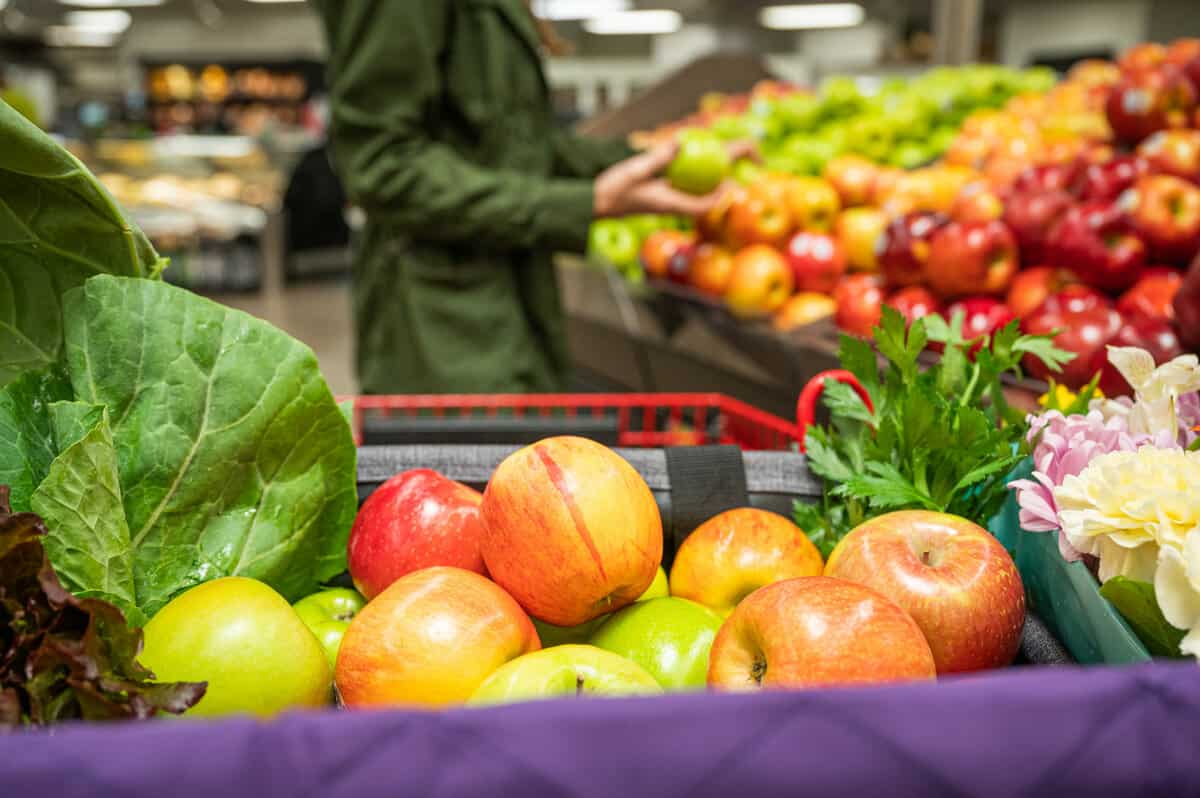What is farm to table? Here’s how produce gets from the farm to the store!
Have you ever wondered how your favorite fruits, veggies and nuts get from farm to table?
Fact: produce doesn’t come from a store. It comes from hardworking California farm families and the Golden State provides over 50% of the Nation’s produce. Most importantly, a whole slew of people play a role in harvesting, packaging and shipping that produce before it hits the shelves of your favorite local grocer. Here’s how fruits, vegetables and nuts get from farm to table.
How are Fruits, Vegetables & Nuts Grown in California?
California farmers grow over 400 different fruits, vegetables and nuts. Because there are such an overwhelming number of variables, let’s stick to generalizations. Crops are either annual or perennial. Annual means that the fruit or vegetable are replanted every growing season. Vegetables like lettuce, peppers, and pumpkins are annual crops. Grapevines, some artichokes, and fruit and nut trees are all examples of perennial crops. This means that they live for more than two years (and often much longer!) and are harvested multiple times throughout their lifespan.

What types of crops grow from seeds?
Annual crops, like peppers and lettuce, typically grow from seed. Seeds are either sown directly into the ground or started in a greenhouse. This decision is typically based on the length of the growing season and the crop’s time to harvest.
Root vegetables, like sweetpotatoes and carrots, grow from tubers. In many areas, they are technically perennial but are grown as annuals by commercial farmers.
Perennial crops can grow from seed or from starts, which are a cutting from an existing plant. Most perennial plants take a few years before reaching maturity and producing a crop.
How is produce harvested?
When fruit, vegetables and nuts are ripe, that means it’s time for harvest. Depending on the crop, harvest is done either by hand or by a machine. Let’s take a look at what happens once produce is ripe and ready to harvest!
How are fruits and vegetables hand harvested?
Fruits and vegetables like artichokes, kiwi, peppers, table grapes, pumpkins and lettuce are hand harvested. In the case of kiwis, they are quite literally hand harvested – meaning workers use nothing but their hands to harvest kiwi from the vine!
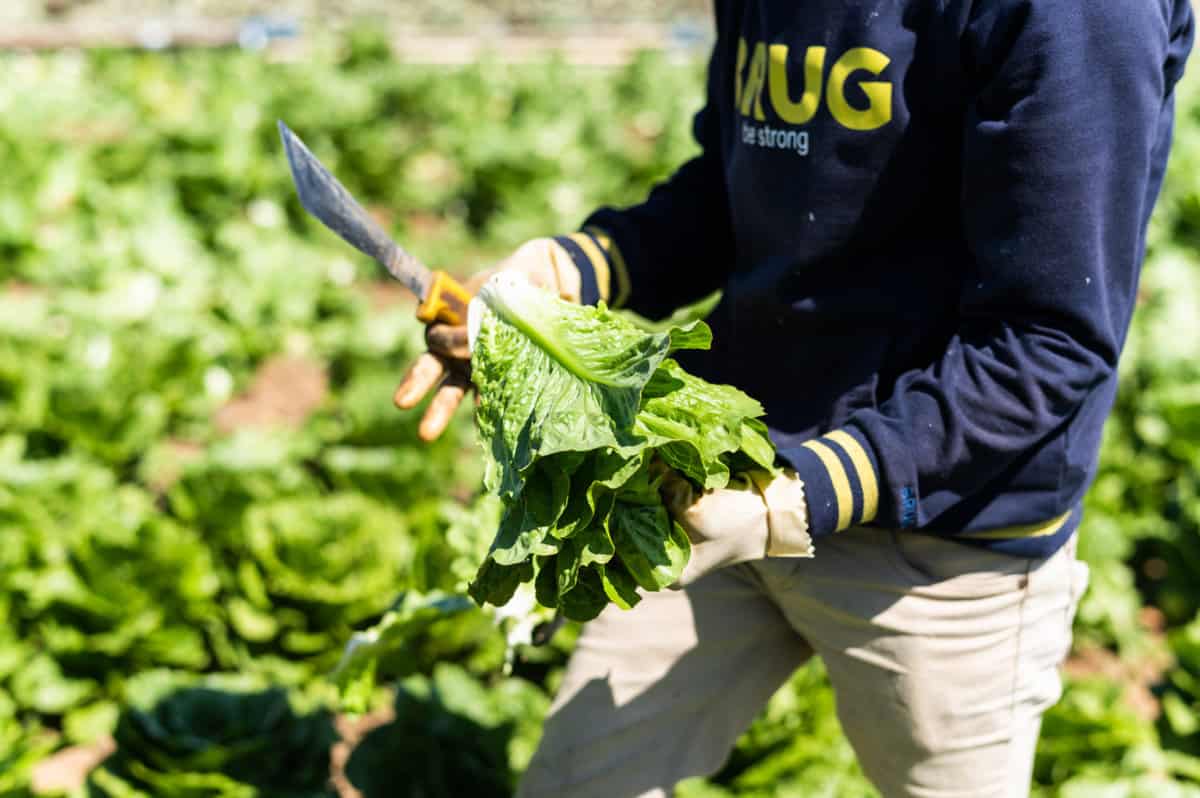
Vegetables like artichokes and lettuce require the use of special cutting tools. This type of labor involves a fair amount of skill. If this step isn’t executed correctly, it can damage the plant and impact future production.
Other fruits and vegetables, like peppers and table grapes, are carefully snipped from the plant using clippers. While harvesting, the team typically wears carriers to collect produce. At the end of each row (or when their pack is full), the team empties their packs into bins. When the bins are full, tractors and trucks transport them to larger trucks, which whisk the produce away to cold storage.
How is Produce Machine Harvested?

Nuts, prunes, and DOV raisins are just a few examples of crops that are machine harvested. A harvester drives between the rows, and shakes the trees (or vines) so the fruit or nuts fall from the tree. The fruit or nuts are collected onto conveyor belts that transport the produce into bins that are strapped onto the harvester.
When the bins are full, they are loaded onto a truck and transported to either a processing facility or cold storage (depending on the crop). Sweetpotatoes and other commercially grown root vegetables are also typically machine harvested. A large harvester equipped with a digger pulls the crop out of the ground and loads it onto a trailer.
Note: Some commodities are harvested either mechanically or by hand. Two examples of such crops are winegrapes and olives. It is up to the grower to decide what method best suits the intention for the end product.
What happens after produce is harvested?
Once produce is harvested, things move quickly. California farmers pride themselves on providing the nation with fresh, high-quality produce. Each farmer does their best to minimize the amount of time it takes for produce to travel from farm to table.
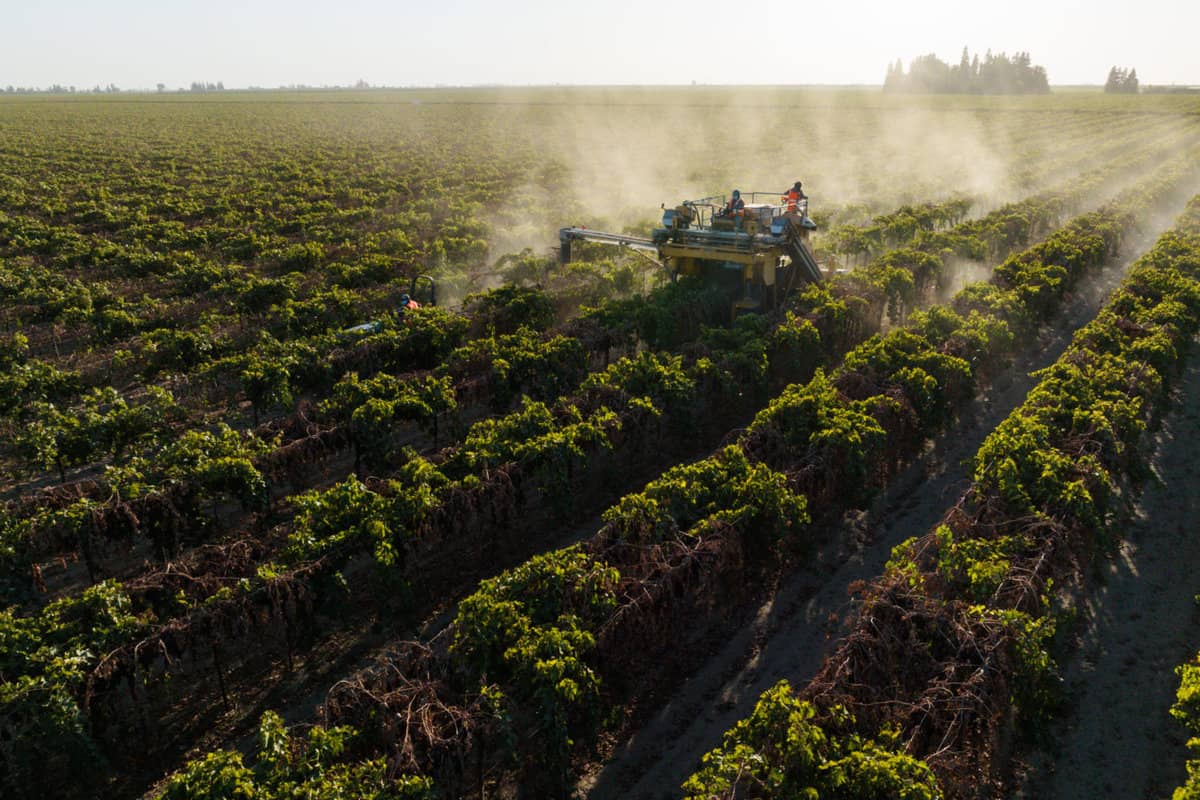
Why is Produce Stored in Cold Storage?
Fruits and vegetables that need to be refrigerated are transported to cold storage directly after harvest. They are pre-cooled, meaning quickly brought down to a lower temperature rapidly, and stored until ready to be packaged or processed. Cold storage greatly extends the shelf life of produce and helps to keep it at peak ripeness until it reaches your local grocer – and ultimately, your table.
Is produce washed before it travels from farm to table?
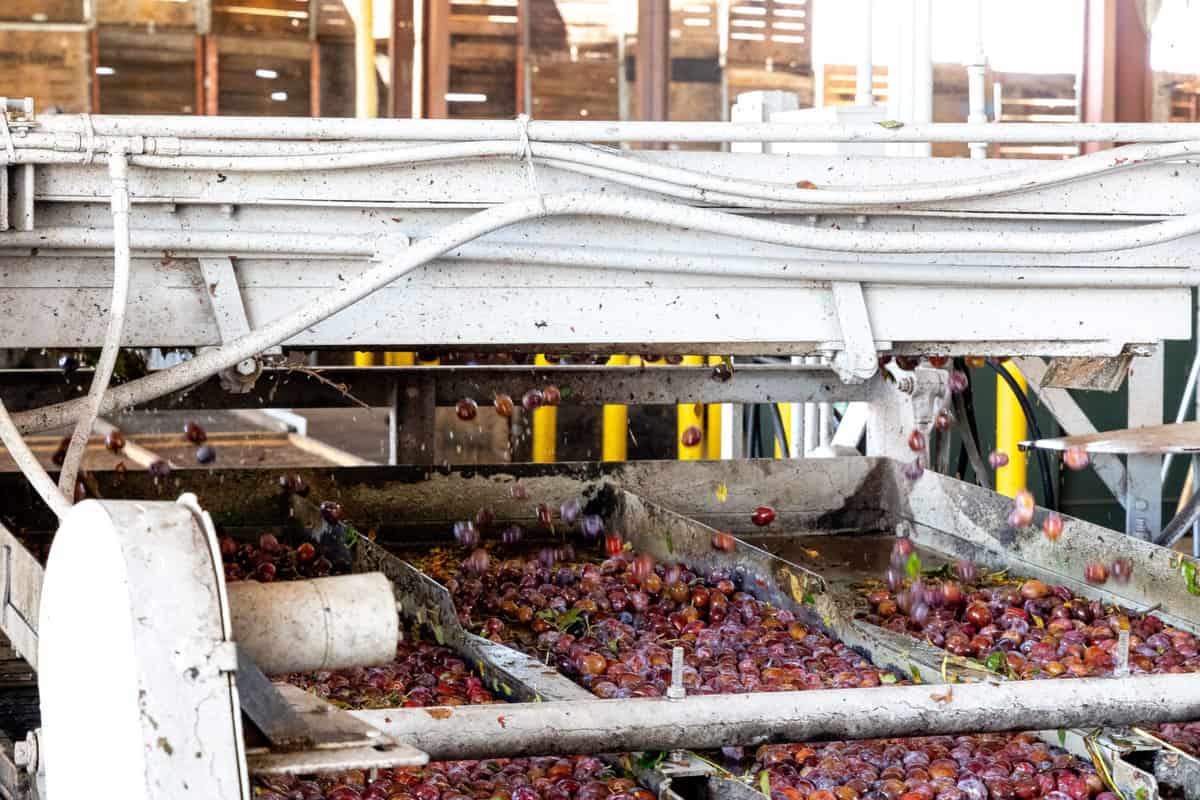
The more durable fruits and almost all vegetables are cleaned with sanitized wash water to remove dirt and possible contaminants. This happens one of two ways. They are either submerged in a tub or rinsed with a spray bar as the produce passes along a conveyor belt.
Some fruits, like figs and table grapes, are not pre-washed. They are more delicate and would likely get damaged during this process. Nuts are not washed with water, but some are pasteurized before hitting the shelves of your favorite grocery store.
****It’s a good idea to wash all fruits and vegetables before you eat them. The FDA recommends rinsing fruits and vegetables under running water, scrubbing firm-skinned produce with a soft-bristled brush, and using a towel to remove any further dirt or contaminants.
How are Fruits, Vegetables and Nuts Sorted & Graded?

In some cases, such as artichokes and sweetpotatoes, this happens immediately after harvest in the field. The harvest team will visually inspect the produce for blemishes and sort by sight according to size. Other times, this is done at a processing facility. After an initial visual inspection, it is sorted and graded with the help of specialized machinery that detects the weight and size and sorts it accordingly.
What types of packaging are used to transport produce from farm to table?
After the produce has been washed, graded and sorted, it’s time to pack it up! How produce is packaged varies greatly. Perishable fruits and vegetables require airflow, while shelf-stable items like dried fruits and nuts are sealed in airtight packaging to further extend their shelf life.

Hardier fruit and vegetables like artichokes and peppers are stored in cardboard boxes or plastic packs. More delicate items, like berries and grapes, are often stored in clamshells to protect them from damage. Some fruits, like apples and kiwis, are loaded onto trays before being stacked in boxes to protect the fruit from bruising during transit from farm to table.
The packaged produce is then boxed up, palletized and loaded onto trucks that will transport it to its final destination – a grocery store near you!
How is Produce Transported to the Store?
The pallets of produce are transported by truck, rail, air or sea to wholesalers and retailers. Fresh produce requires climate-controlled transportation to prevent the growth of bacteria and to extend shelf life. Once the fruits, vegetables, and nuts have reached the store, a team of employees unload the pallets off of the truck and stack them on your local grocer’s shelves.
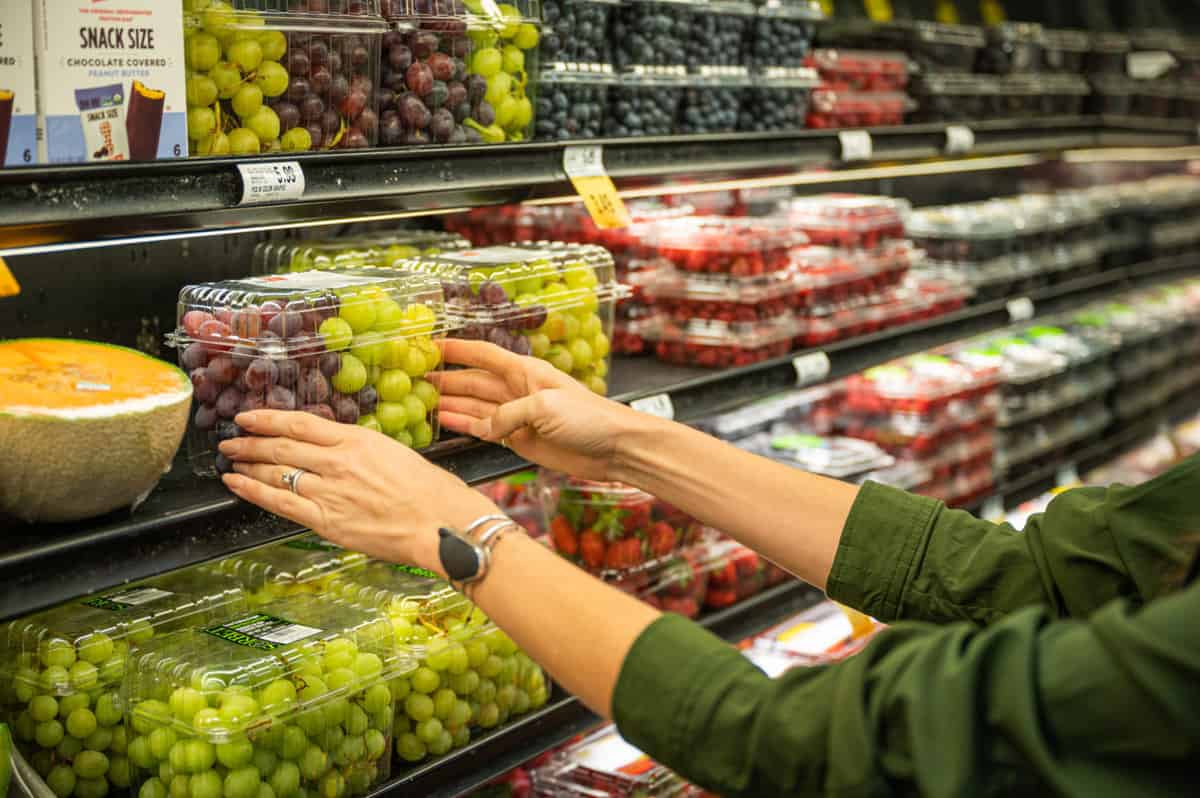
How can you tell where your produce was grown?
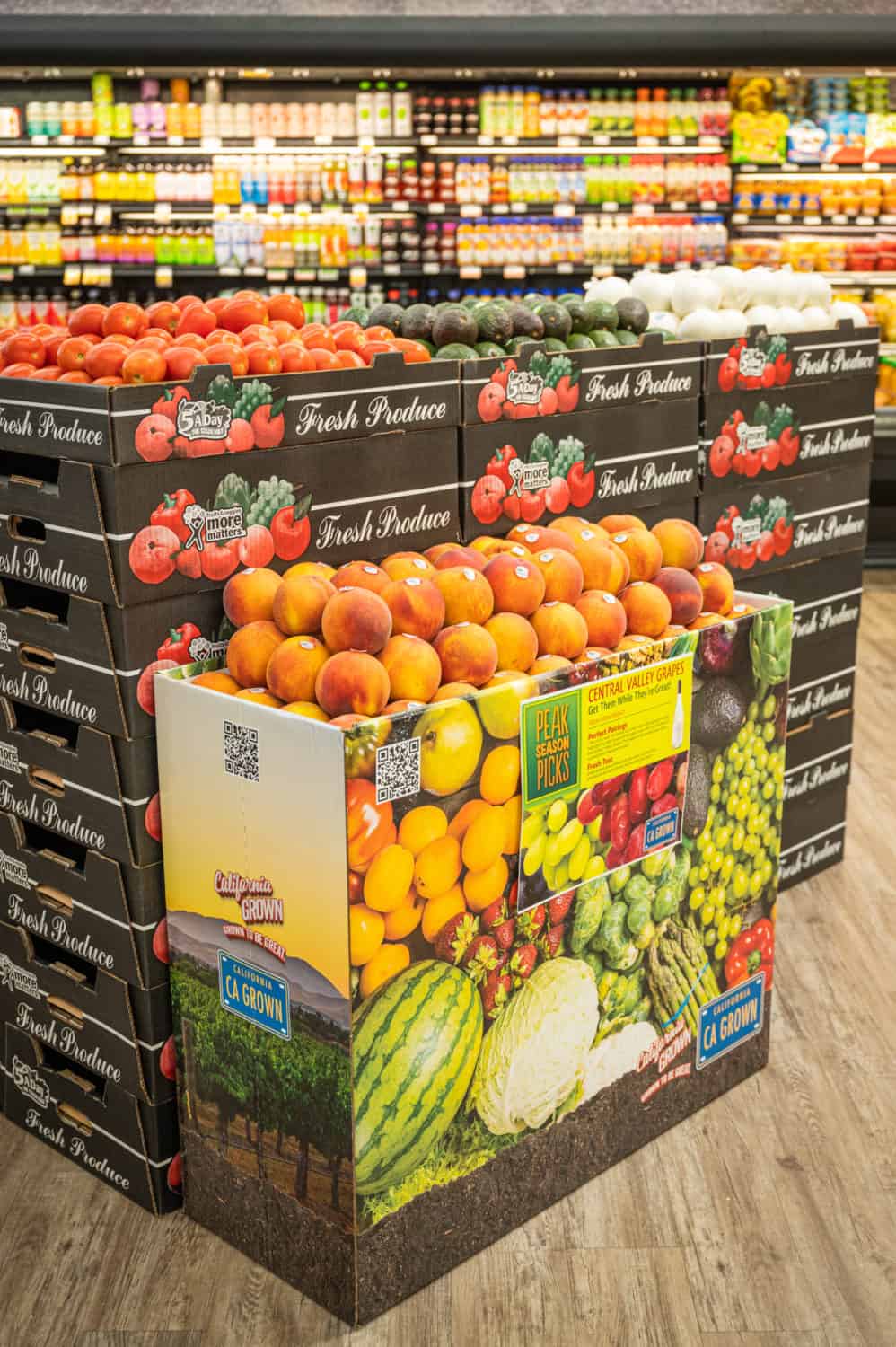
At the grocery store, there are lots of different ways to tell where your produce was grown. First and foremost, look for the CA GROWN license plate. You might see this on a shelf card, on packaging, or on individual stickers. If you can’t find the CA GROWN license plate, look for produce grown in the USA. Grocery stores are legally required to display the country of origin. California farmers grow over 400 different crops, from berries to lettuce, grapes, sweet potatoes and more. If it was grown in the US, there’s a good chance it was grown in the Golden State!
Extra Credit:
Learn more about how to tell whether fruits, vegetables, nuts, meat and dairy are CA GROWN
Find out what’s ALWAYS in season in California (there’s a lot)!
Did you know that there are 19 crops that are grown only in California?
Learn a little more about how some of your favorite commodities are grown or made!
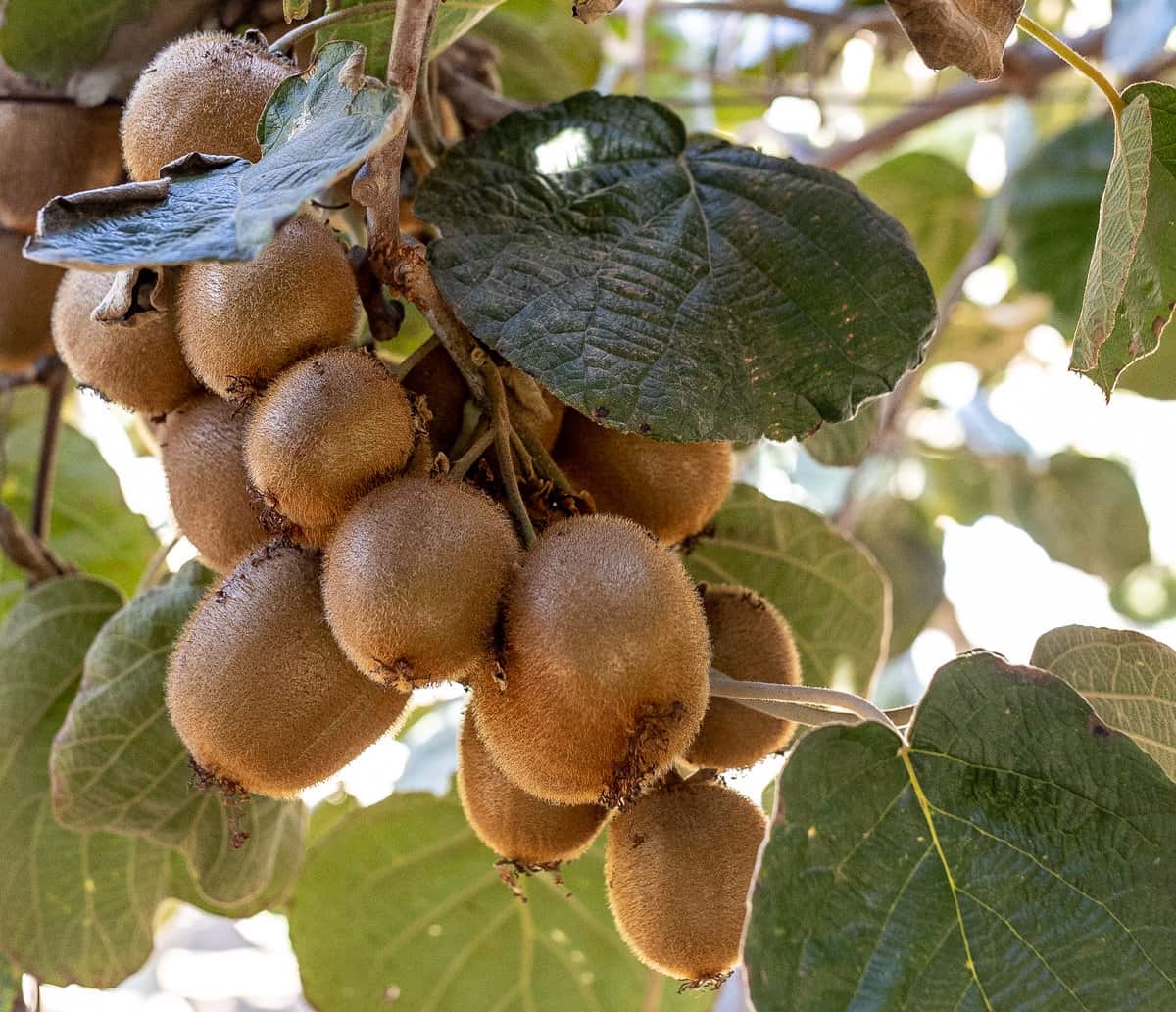


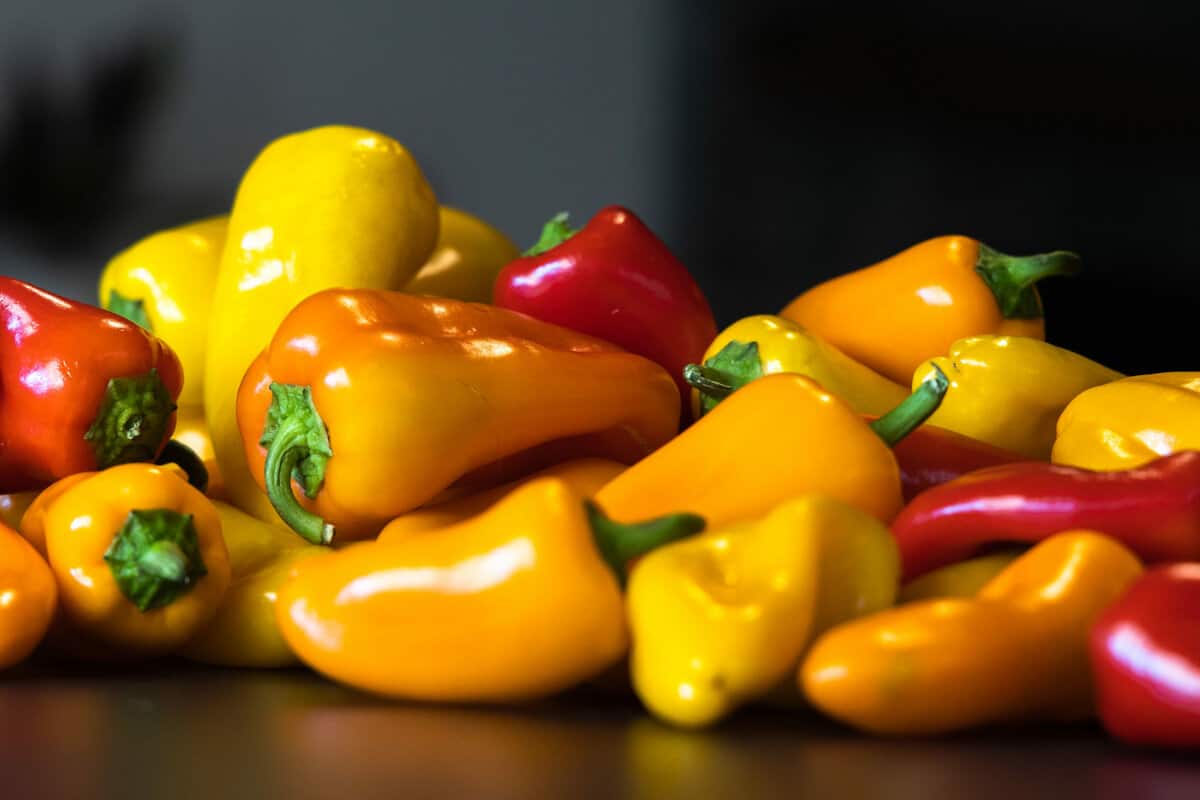

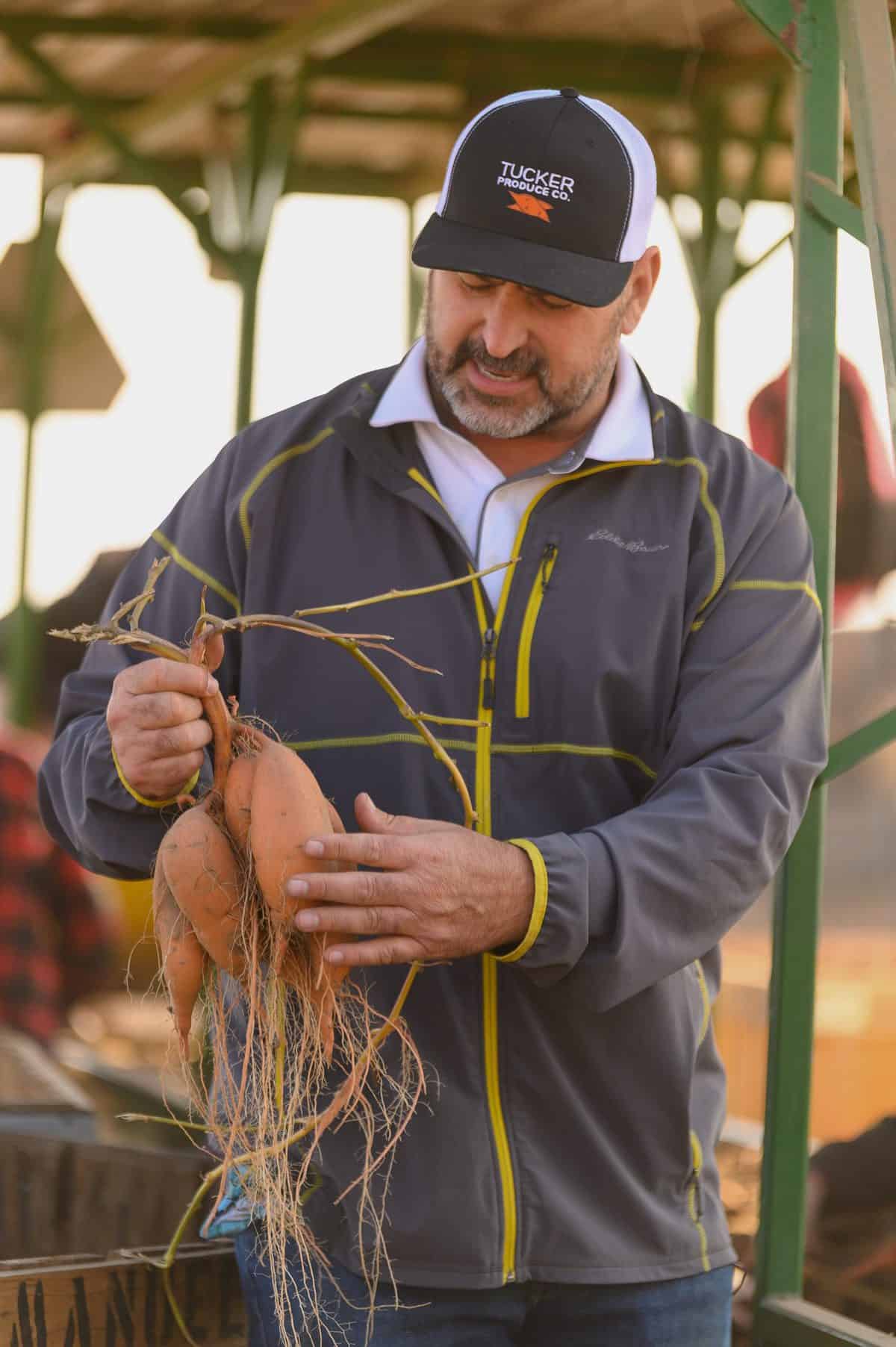
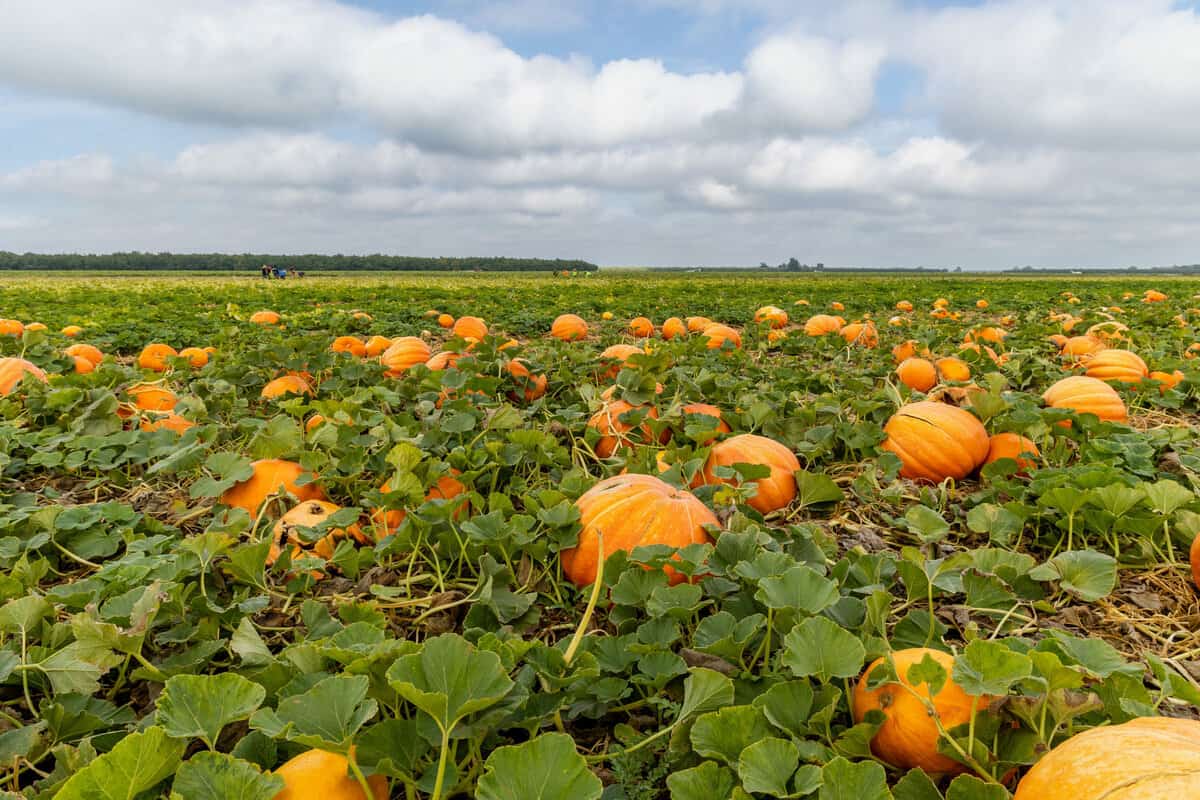
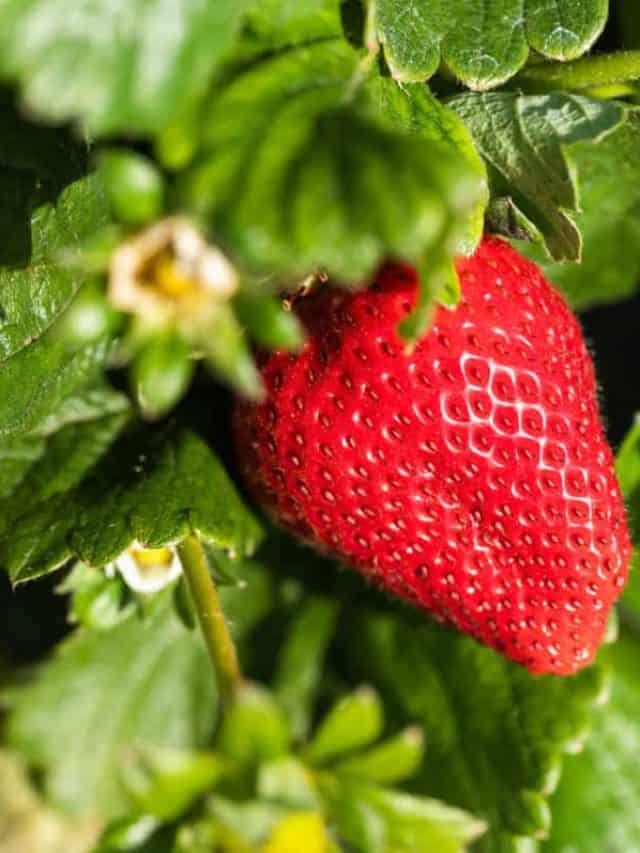
Article by Hilary Rance. Photography by James Collier, Alycia Moreno & Hilary Rance

